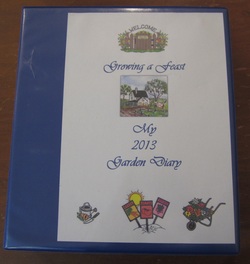
I started off with a very lovely, purchased 2013 Garden Diary from NZ Gardening Magazine. I love to look at it for ideas and all the lovely photos, but there was nowhere enough room for me to record everything I wanted to. After gluing and taping in extra photos and notes, I realised it would be simpler to just create my own. So I grabbed a spare ring-binder, sat down at the computer, and put together what works for me. What's in my garden diary? Join me for a wee look inside my 2013 Garden Diary....
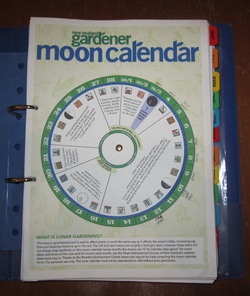
I use this guide to tell me when is the best time of the month to plant above-ground crops, root crops, or just concentrate on other garden chores.
I use tab dividers in my binder - each with a month of the year on it - to make flipping from month to month easy.
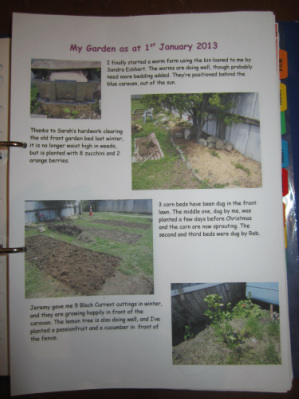
These photos and notes are very helpful - it is encouraging to look back and see how the garden has grown month by month, and it's also a useful memory jogger down the track - for example if I want to remember in which month certain plants were at their peak, or started to have problems. Or to track the growth of biennial or perennial plants.


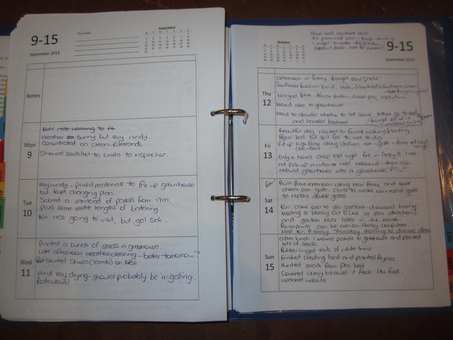
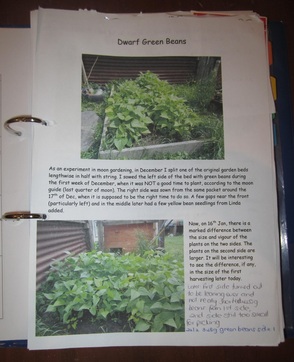


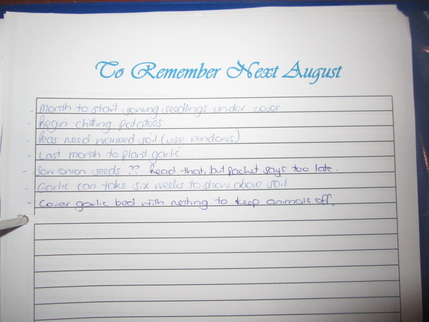


I hope you have enjoyed this wee tour of my Garden Diary! I do find it a very handy tool to keep track of and plan my garden. I also tend to add in other notes and pages printed from the internet, but have to limit myself as my binder can only hold so much! I already had to change it up from a regular size binder to a larger one!
The local knowledge you start to acquire as you do things like track your weather is an enormous help in the garden. For example, I have noticed over the last few years (due to lambing in spring) that we always have storms and gales in September, which is the month of the Equinox. Knowing this, I can plan accordingly, ensuring things are anchored down well, plants that need it are well staked, animals have shelter etc. A local friend told me recently that strong winds are also normal for the end of November. I hadn't particularly noted that before, but she is right to point out that things like corn and broad beans, which are normally very tall by then, are likely to be blown over if not well anchored or staked. Forewarned is forearmed! Keeping track in a garden diary helps you become familiar with your own typical weather patterns, and reduces how often you're caught by surprise.
Personally, I wouldn't be without my garden diary!

 RSS Feed
RSS Feed
